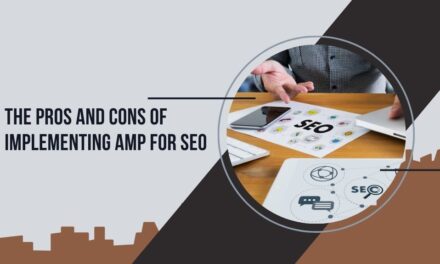The internet is flooded with content, but not all content is made equal. Some articles draw readers and rank highly in search results, while others are buried deep in search results, rarely visible. What makes top-performing content different from the rest? It’s a clever combination of SEO copywriting and engaging storytelling.
Many people think SEO and creativity can’t go hand in hand. But that’s a myth. With the right techniques, you can create engaging content that delights readers while also pleasing search engines.
What Is SEO Copywriting?
Writing content that appeals to search engine algorithms as well as human readers is the art and science of SEO copywriting. It isn’t about following formulas or stuffing keywords. It all comes down to carefully selecting pertinent keywords, organizing your writing, and producing insightful content that addresses readers’ queries.
Done right, SEO copywriting helps your pages rank higher in search engine results, drives organic traffic to your website, and encourages users to engage with your content, share it, and convert into customers or subscribers.
Why Engaging Content Still Matters
It’s easy to focus on keywords, metadata, and technical aspects of SEO, but all of that is meaningless if your content doesn’t hold the reader’s attention. Engaging content is what keeps people reading, clicking, and returning for more.
If the article seems monotonous or overly robotic, even the best-optimized one will fall flat. Writing for readers should therefore always be your first concern. Consider your readers as the destination and search engines as the entryway. Both are necessary for success.
When you master the combination of SEO copywriting and engaging content, you create a powerful engine for visibility and trust.

The Pillars of Great SEO Copywriting
Let’s break down what makes SEO copywriting effective. There are a few foundational elements you should always consider when writing any piece of online content.
Keyword Research and Placement
Before you start writing, know which keywords you’re targeting. These are the search terms people use to find information related to your topic. Use tools like Google Keyword Planner, Ahrefs, or Ubersuggest to find popular and relevant keywords.
Once you have your list, naturally incorporate them into:
- The page title
- The first 100 words
- Headers and subheadings
- Body content
- Meta descriptions
- Image alt texts
But remember: don’t force them. Overusing keywords can make your content awkward and reduce readability. Focus on flow and readability first, then optimize where it makes sense.
Writing for People First
Search engines are smarter than ever. They prioritize content that truly helps users. That means your content should solve a problem, answer a question, or provide genuine value.
When writing, always ask yourself: “Would someone enjoy reading this? Would it make sense if they didn’t know anything about SEO?”
The most successful SEO copywriting occurs when the reader is merely enjoying informative, interesting content without even realizing it is optimized.
Crafting Compelling Meta Descriptions
Your meta descriptions act like the elevator pitch for your article. They appear under your headline in search engine results and play a big role in whether people click on your link.
Even though meta descriptions don’t directly influence rankings, they can greatly affect click-through rates. That means more visitors, more engagement, and better overall performance.
To write a good meta description:
- Keep it under 160 characters.
- Include your target keyword naturally.
- Make it clear, enticing, and relevant to the content.
Think of your meta descriptions as a mini ad. Make people want to click.
Optimizing for On-Page SEO
On-page SEO refers to all the actions you take within your website to improve its visibility. While SEO copywriting is a big part of it, on-page SEO also includes:
- Using header tags (H1, H2, H3) correctly
- Adding internal and external links
- Optimizing images (file size, alt text)
- Improving page speed
- Ensuring mobile responsiveness
When these elements work together, your content becomes easier to crawl, index, and rank—while still being easy and enjoyable to read.
Techniques to Make Your Content More Engaging
You’ve got the SEO part down, but what about engagement? Here’s how to make sure your content doesn’t just attract readers—it keeps them hooked.
Start with a Strong Hook
The tone is established by your introduction. Readers will click away if it is uninteresting or unclear. Start with a daring claim, an unexpected fact, or a situation that many can identify with. Quickly explain to readers why they should be concerned.
In SEO copywriting, the first few lines are critical. Not only do they show up in snippets, but they also influence bounce rates. Grab attention early.
Use Clear and Conversational Language
No one enjoys reading complicated, jargon-heavy paragraphs. Your goal should be to sound human. Write like you’re having a conversation with your reader.
Simple, relatable language builds trust. If your audience understands you, they’ll stay longer and be more likely to share your content.
Break Up the Text
Lengthy paragraphs can be daunting. Utilize brief paragraphs, headings, and bold text to direct the reader’s attention. This is particularly crucial for mobile readers.
Formatting is a big part of on-page SEO, too. Search engines favor content that’s organized and easy to scan.
Tell Stories
People remember stories, not statistics. Whenever possible, include anecdotes, case studies, or personal experiences to bring your message to life.
Whether you’re writing about plumbing or photography, storytelling adds personality and makes your engaging content more memorable.
Use Questions and Answers
Questions make your content interactive. They also mimic how people search. For example:
What is SEO copywriting? How do I write a good meta description?
Incorporating and addressing questions not only boosts SEO copywriting but also enhances your likelihood of appearing in Google’s “People Also Ask” section.
Structuring Content for SEO and Readability
Good structure is at the heart of both SEO and engagement. It helps search engines understand your content and readers navigate it with ease.
Here’s a reliable content structure:
- Headline (H1): Clear, keyword-rich, and compelling.
- Introduction: Sets the stage and explains the purpose.
- Body (H2s and H3s): Organizes topics and subtopics logically.
- Conclusion: Recaps the main points and adds a call-to-action.
This format is not just good for on-page SEO—it’s how most people consume content.
Writing with Search Intent in Mind
Search intent refers to the reason behind a search query. Are people looking for information, trying to make a purchase, or comparing products?
Excellent SEO writing matches content with purpose. When someone looks up “how to write meta descriptions,” they are seeking a guide, not a promotional offer.
Match your content to what your audience expects. That’s how you create both engaging content and better search performance.
Updating Content Regularly
Search engines love fresh content. So do readers. Make it a habit to revisit old posts, update statistics, add new examples, and refine your meta descriptions and keywords.
This not only boosts your on-page SEO but also keeps your content relevant in a fast-changing digital world.
Avoiding Common SEO Copywriting Mistakes
Let’s look at a few common traps to avoid:
- Keyword stuffing: It makes your content unreadable and may get penalized.
- Ignoring structure: Lack of headings and flow turns readers away.
- Weak meta descriptions: If they’re vague or missing, you lose valuable clicks.
- Writing for bots: If your content feels robotic, humans won’t stick around.
- Neglecting mobile readers: Most users read on phones. If your layout fails on mobile, you lose half your audience.
Remember, the best SEO copywriting is invisible—it reads naturally while still delivering results.

Measuring Your Content’s Performance
Producing content is just part of the task. You must assess what is effective and what is not. Utilize tools such as Google Analytics and Search Console to monitor:
- Page views
- Bounce rate
- Time on page
- Click-through rate on meta descriptions
- Keyword rankings
Use this data to refine your strategy and focus on what resonates most.
Combining SEO with Creativity
Some writers fear that SEO ruins creativity. But when done well, it enhances it. By understanding what your audience is searching for, you gain inspiration and direction.
You can still write beautifully, tell stories, and express your brand voice—all while practicing great on-page SEO.
Here’s the secret: Creativity makes your content stand out. SEO ensures it gets seen.
Final Thoughts
SEO does not require compromising creativity. Creativity does not imply neglecting SEO. The true enchantment occurs when they unite. By utilizing effective SEO copywriting, you can create content that performs strongly in rankings, attracts traffic, and converts visitors. By concentrating on captivating content, you guarantee that these visitors remain, read, and return for additional experiences. From engaging meta descriptions to effective on-page SEO, each aspect of your content must collaborate to provide value to your audience—and outcomes for your business.
Start with your reader in mind, add in the SEO fundamentals, and watch your content flourish.












